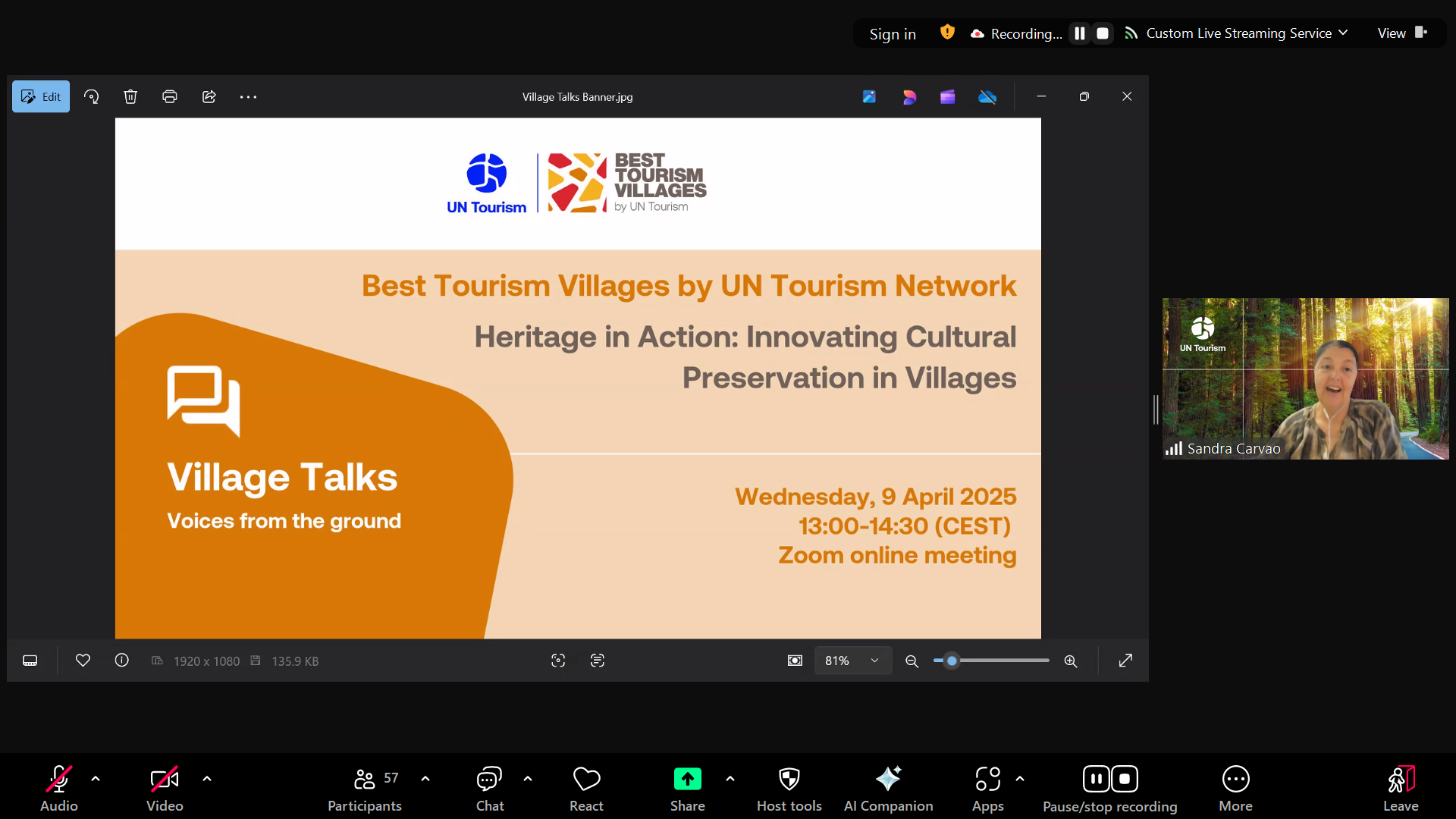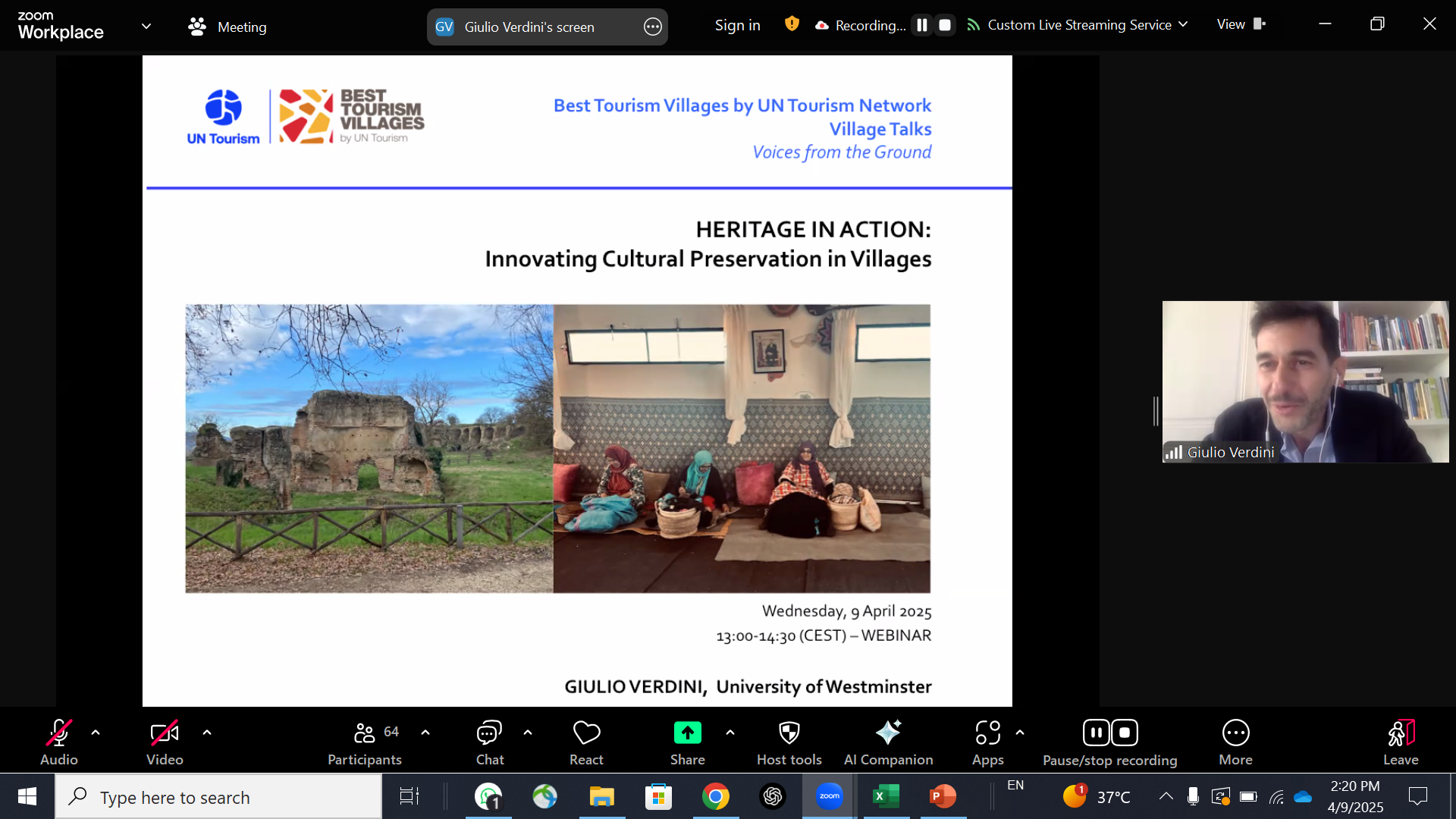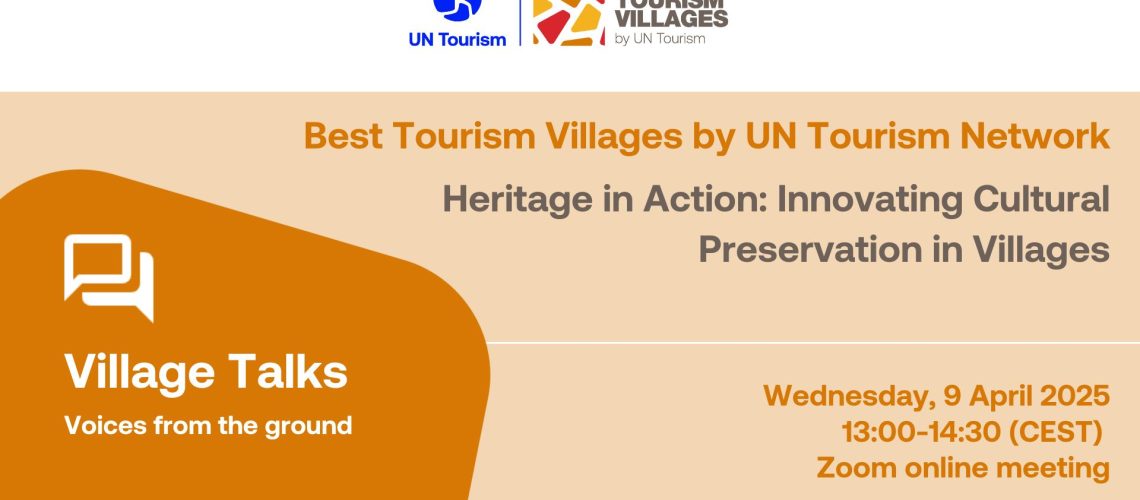
The inaugural session of Village Talks – Voices from the Ground opened a rich conversation on the evolving relationship between cultural heritage and rural tourism. With powerful examples from our Best Tourism Villages in Japan, Portugal, and Mauritius, the discussion explored how communities are actively preserving traditions while welcoming visitors into their cultural landscapes.
The session was introduced by Sandra Carvão, Director of Market Intelligence, Policies, and Competitiveness (MIPC) at UN Tourism. Highlighting the crucial role rural communities play in sustainable tourism development, she explained that Village Talks will serve as a platform to amplify local perspectives and demonstrate how well-managed rural tourism can effectively balance cultural preservation with economic growth.
Rethinking Heritage

In his keynote, Dr. Giulio Verdini, Associate Professor in Urban Planning at the University of Westminster and UN Tourism Expert, challenged participants to move away from the notion of heritage as something static.
He proposed a shift in mindset — from preservation as protection to preservation as participation. According to him, rural heritage must be approached as a living process, shaped by the people who carry traditions forward. “Tourism must support heritage as a living process — rooted in local knowledge, memory, and participation,” he stated. He also called for more integrated approaches to rural development where tourism, culture, and local governance work hand in hand to sustain identity and livelihood.
Japan’s Living Museum: Conservation in Shirakawa
Tomoyuki Kose, Tourism Promotion Department Associate Director at Shirakawa Village Office, spoke about the delicate balance between preservation and tourism in the UNESCO-listed village of Shirakawa, famous for its Gassho-zukuri thatched-roof farmhouses.
These unique architectural structures require constant upkeep, which the community has taken on as a collective responsibility. He explained how the village enforces visitor guidelines, trains locals as guides, and involves residents in decision-making to ensure that tourism supports—not disrupts—local life.
Portugal’s Storytelling Heritage: Integration in Castelo Rodrigo
From Portugal, Duarte Rodriguez, Tourism Technician with the Historical Villages of Portugal Network, presented the case of Castelo Rodrigo — a village where medieval architecture and rural life coexist.
Focusing on the theme of cultural integration into tourism, Rodriguez described how heritage becomes more powerful when it’s emotionally accessible. He outlined how the village leverages interpretive trails, restoration using traditional materials, and the promotion of local crafts to create authentic experiences. A standout strategy has been using heritage not just to attract tourists, but to engage youth and artisans, keeping local knowledge alive while encouraging economic growth.
Mauritius’ Memory of Resistance: Transmission in Le Morne
Ludovic Labeaute, Councillor at the District Council of Black River, brought a powerful and emotional perspective from Le Morne, Mauritius, a village recognized by UNESCO for its historical role in the fight against slavery. He highlighted heritage management and cultural transmission, underlining how the village’s identity is deeply linked to memory and freedom. Labeaute spoke of how the community incorporates oral histories, rituals, festivals, and educational programmes into the visitor experience. Tourism here is carefully designed to respect the sacredness of the site while ensuring that its story continues to inspire both locals and guests.
The session closed on a hopeful note: when communities are empowered to lead tourism strategies, rural development and cultural resilience go hand in hand.
For more highlights from the session, watch the session here:


